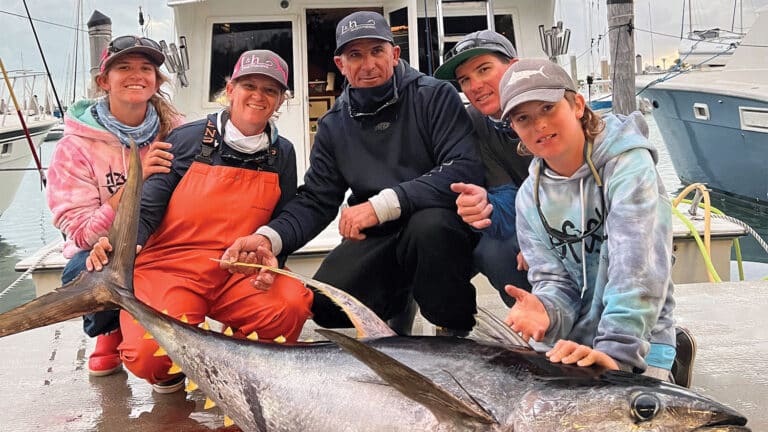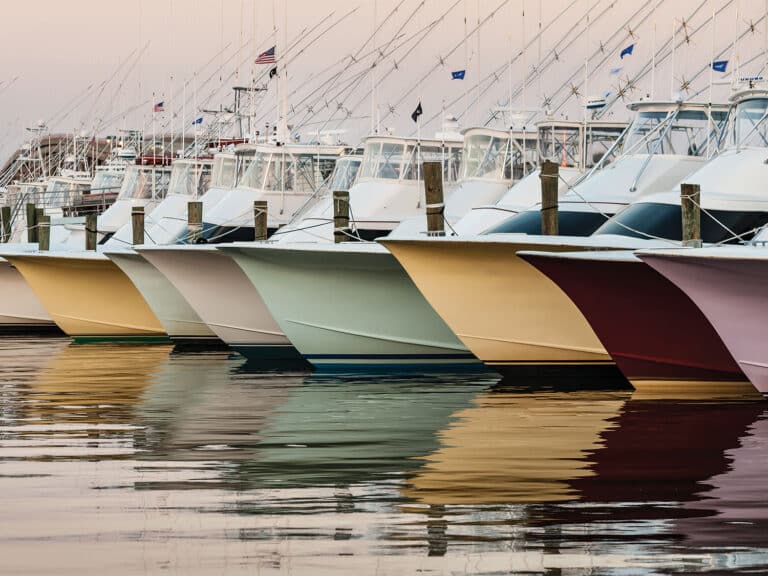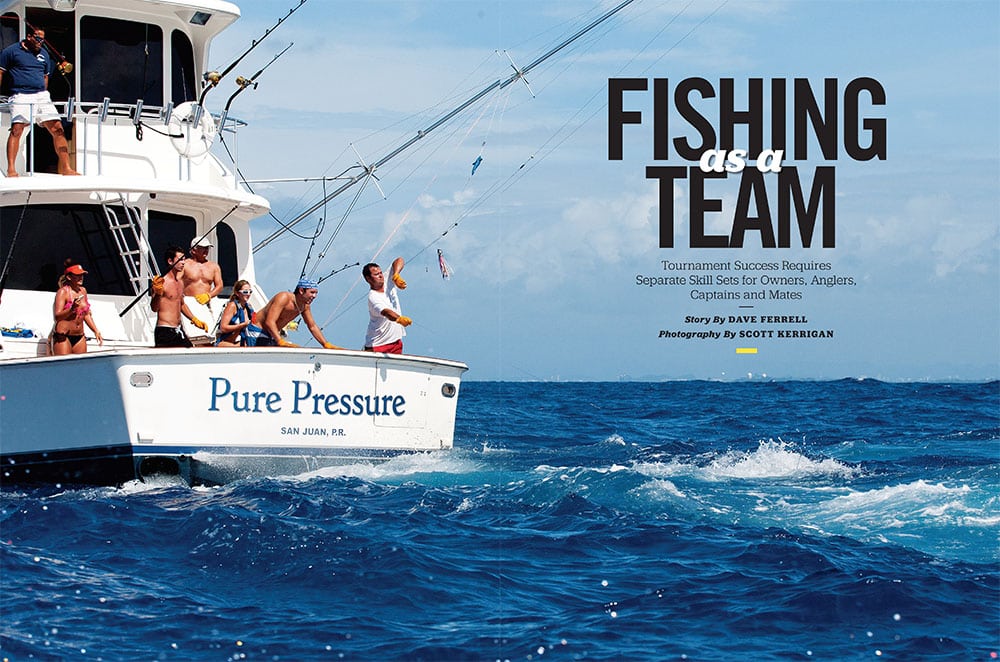
Opener
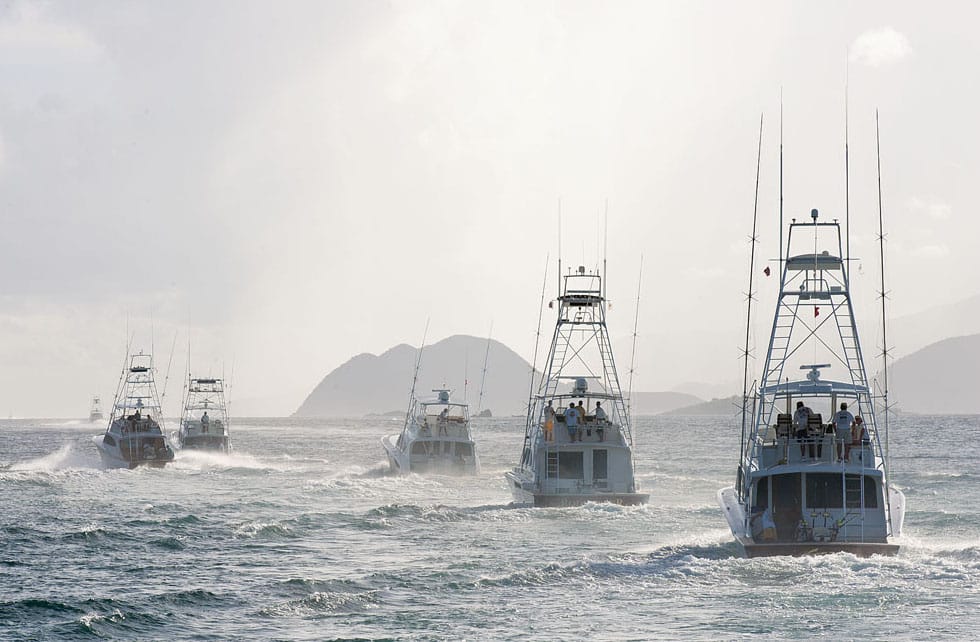
Owner
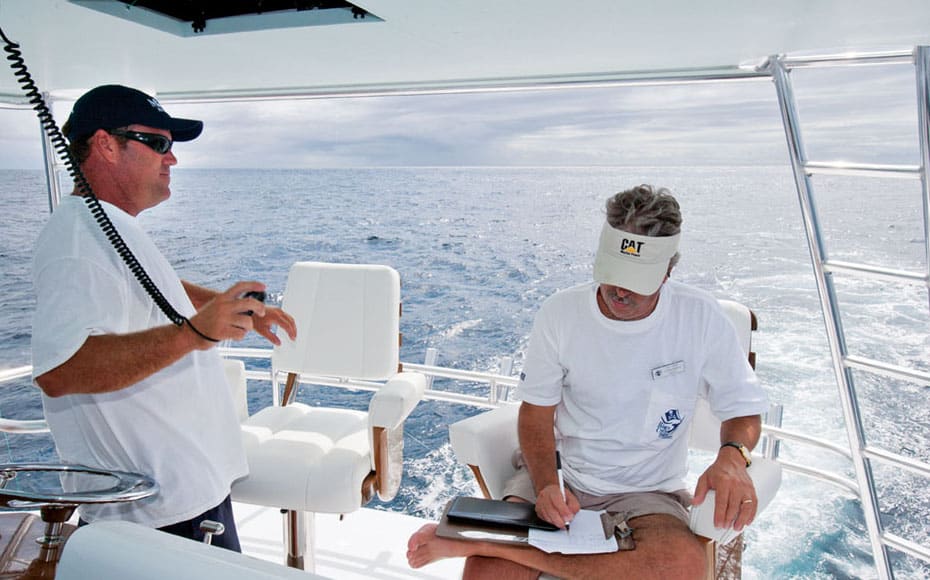
Owner
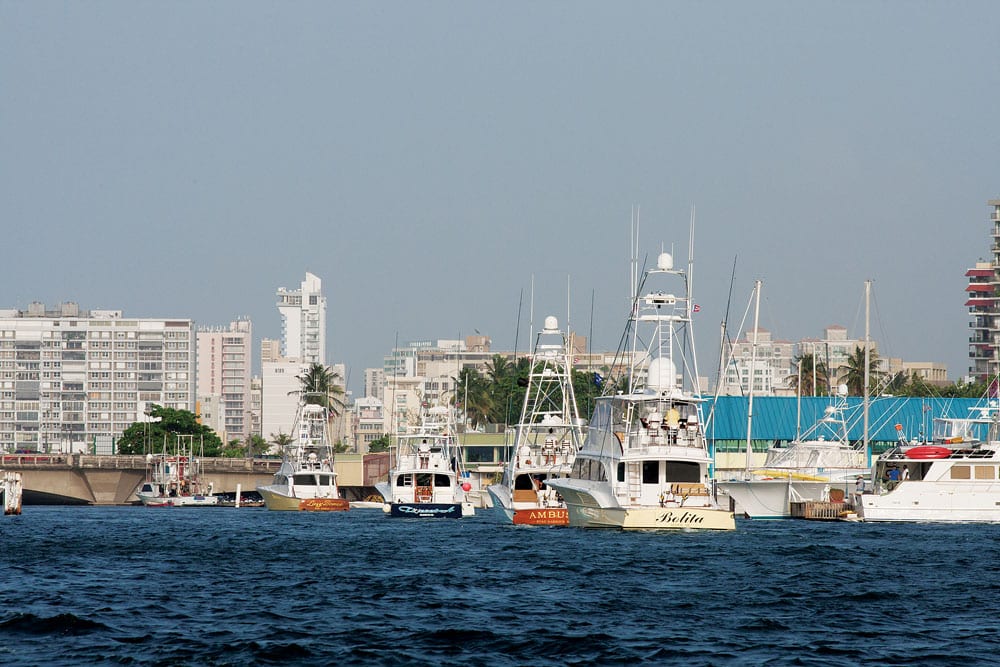
Captain
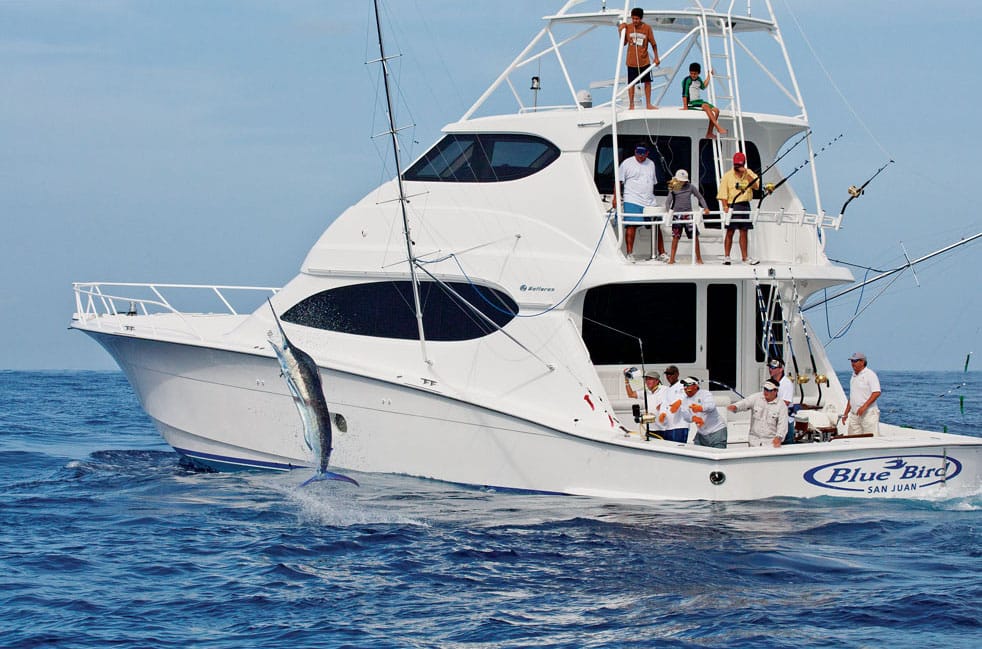
Captain
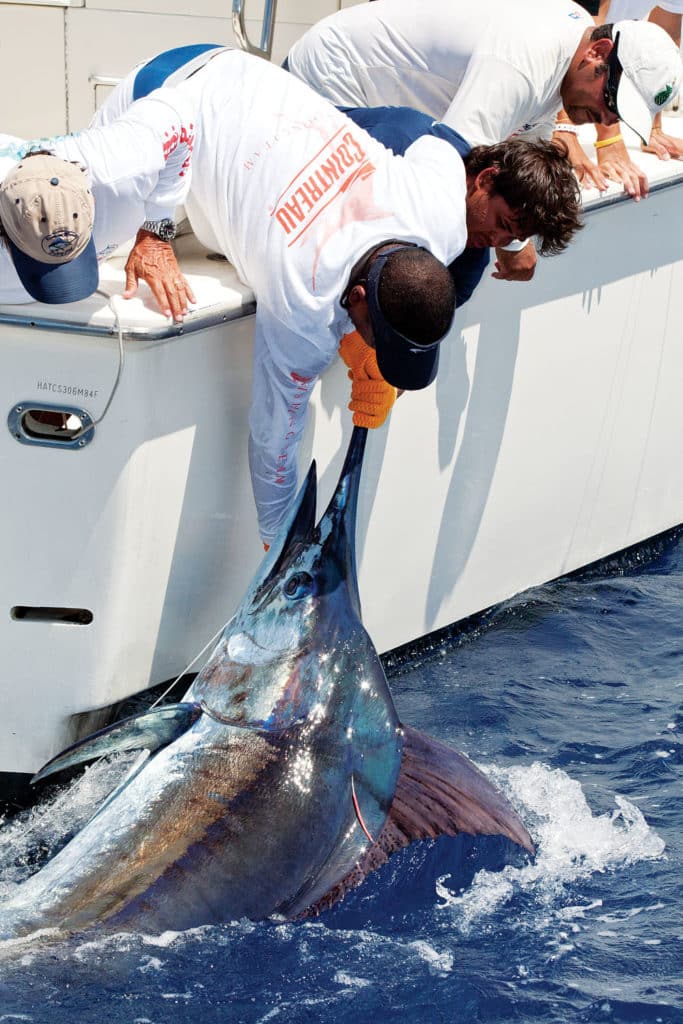
Mate
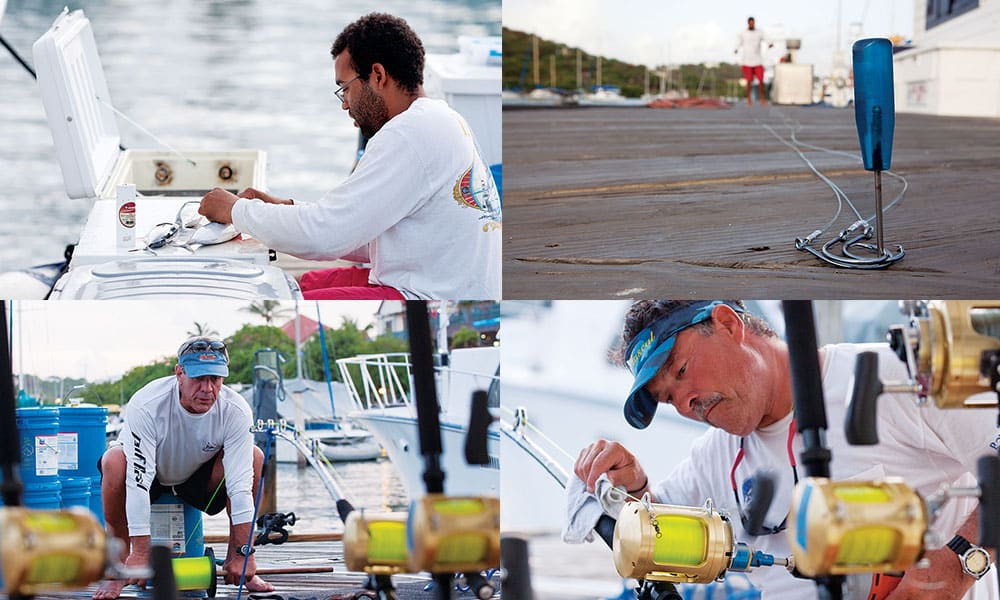
Mate
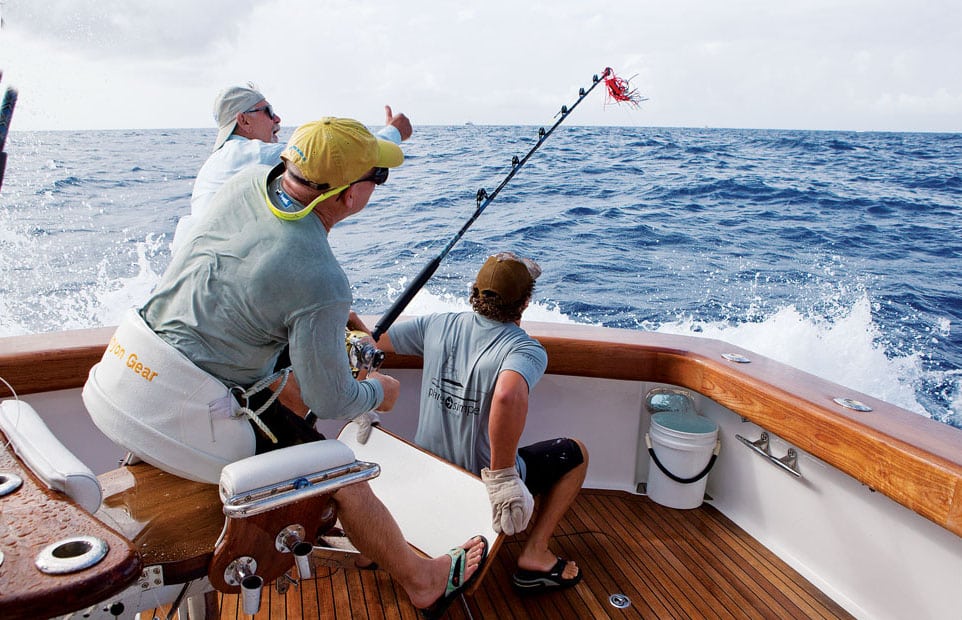
Angler
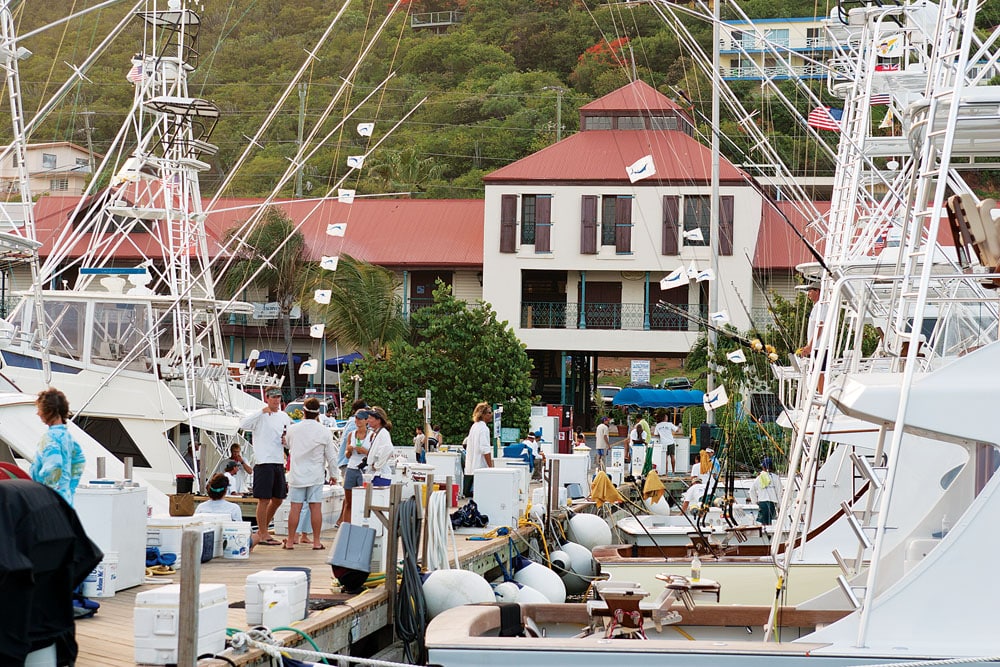
Angler
A lot of anglers like to fish in tournaments, but few ever win one. And that seems to be OK for most participants. Many tournament fishermen look at tournament fishing as if they are entering a lottery — if they get lucky, they just might have a chance to win it, and as a bonus, they get to have a whole lot of fun attending tournament parties and hanging out with all the fellows on the dock.
A lot of “big-fish-on-the-dock” tournaments do have a huge amount of luck involved. There’s nothing an angler or team can do to really influence the size of the fish that come up into the spread besides pulling abnormally huge baits to fend off all the little guys, which comes with its own set of problems. Once a big fish does eat, however, the crew’s skill at either landing or getting close enough to photograph or tag the fish does come into play. Unfortunately, most nonprofessional teams rarely have any experience with subduing really big fish, especially when it comes to taking one. The conservation inroads we’ve made over the years limit the number of crewmen who are experienced with taking any billfish, let alone one that can weigh up to a half a ton.
In tournaments where the most fish caught and released win the event, you take a bit more of the luck out of the winning equation. The captain that can put the team into the most meat; the anglers that hook all the fish they see; and a crew that can rig great baits, get them out fast and release fish the fastest will rule the day. In short, it takes a good team to be successful in any tournament, and each player has several specific jobs they must perform to perfection to beat the other guys.
Owner
While some crews think that an owner should just pay the bills and let the rest of the crew worry about the cockpit and strategy, those teams rarely make the podium. A good team needs a good leader, and while the captain bears some responsibility in the direction the team goes, the owner is the one that ultimately puts the team together and sets it up for success.
Donnie Seay, past tournament angler and owner of the 66 Spencer Seay Goddess, spent eight successful years on the tournament trail, fishing such prestigious events as the Poco Bueno Fishing Tournament, Los Sueños Series, Bisbee’s Black & Blue Tournaments, and others. Seay put together a successful team with a singular purpose in mind. “Obviously, if you are going to get into these tournaments, your main purpose is to win,” Seay says. “However, to do that, you need to have as good a crew as you can possibly get. The angler just winds in the line. The other fellows do most of the real work.”
Seay started his team by hiring the late Johnny Uhr as his captain. “Johnny had been running the Chupacabra for a little while and had some great success,” Seay says. “He had access to a large number of truly exceptional friends and crewmen, like Bo Jenyns, Clay Hensley and Oski Rice, that wanted to fish in tournaments. He just knew a lot of good people, and that’s very important when you start putting together a team. We hired a lot of the guys he suggested, and we paid them a good wage and all of their expenses so that they would want to come and fish with us. To get the truly good crews, you also have to give them a good share of the purse when you win.”
Experienced crews know when and when not to harvest a fish, which can save and/or earn a lot of money depending on the circumstances. “A good crew knows when a fish is going to qualify for the event,” Seay says. “If the limit is at 101 inches and somebody else has already boated a 110, then your crew will already know that and keep you from killing a little one. I think our team only killed two fish during our tournament run, and both of those were winners.”
Another important aspect of the captain-owner relationship is trust. “Your boat costs a lot of money, so you need to hire people with the experience and know-how it takes to run and maintain it,” Seay says. “In Texas, we have to sometimes run more than 200 miles over a weekend and then need to catch a fish and get back in time to weigh it. It’s your job to make sure you are on the right boat for the task at hand, and it’s the crew’s job to make sure the boat’s well taken care of and will get us out and back. In some spots, the size and speed of a boat don’t make much of a difference, but if you need to go a long way fast, then you have to have the boat that will get there. Once you’ve hired the right crew, bought the right boat and acquired good-quality tackle, there’s only one thing left for the owner to worry about, and that’s getting the right fish to cooperate. There’s absolutely no feeling in the world like backing up to the scale when you have a big one in the cockpit — nothing like it — it makes it all worthwhile.”
Captains
On any sport-fishing vessel, the captain bears the ultimate responsibility for the boat, crew and where you are going to fish. He plays the part of cruise director, travel agent, human resources manager and engineer all in one. All of those duties are amplified come tournament time.
Capt. Peter Gudaitus is the owner-operator of the private Viking sport-fisher Blood Money, which is currently docked in Isla Mujeres, Mexico. During the summer, however, Gudaitus preps his boat and crew for the grueling mid-Atlantic tournament season where 80-mile runs are the norm. “When we are getting ready, a number of concerns jump to mind, and it’s difficult to say which one worries me more,” Gudaitus says. “It’s really a toss-up between making sure that the boat is in the best operational condition it can be versus what is the best location to start fishing. With several thousands of dollars on the line, both of these concerns have a tremendous impact on a team’s chances for success.
“We spend all season doing everything we can to make sure the boat is in the best operational condition it can be. Unfortunately, accidents and other problems do creep up, and it is usually at the most inopportune times,” Gudaitus says. “On Blood Money, my mate, Anthony Pino, and I do everything we can to make sure that during the months leading up to the August tournaments, all of our kinks are worked out. This includes making sure that all engine maintenance, hull work and running gear is cleaned and checked prior to tournament season. There is nothing worse than having a major boat issue hit you when you need to concentrate on rigging baits, dredges and trying to figure out where to fish.”
The owner-operator’s job comes with a unique set of problems, since the owner on most boats usually abides by the desires of his experienced crew. “Since I’m the owner and the captain, there is even more pressure on me to make sure that we are headed to the right spot,” Gudaitus says. “Any captain will tell you that it is very important to have a network of friends working together and sharing information, but being an owner-operator, especially during tournament season, is especially difficult because if you choose the wrong spot to fish, you only have yourself to blame.”
In addition to keeping his ear on the dock chatter and the radio, a good captain also listens to any information he gets from his crew. The boys talk on the dock, and a friendly, well-respected and well-liked mate is worth his weight in gold when it comes to getting info on fishing styles or tips that are working in the area.
And, of course, the one thing that makes the most difference for any team is practice.
“We try our best to eliminate as many variables as possible,” Gudaitus says. “We consistently fish with the same team members. We make sure that our gear is in top working order, including all of our dredge systems. We use the best bait we can get. That’s about all you can really do. If it were possible to eliminate any potential boat issues and always pick the correct spot to fish, I would sleep a lot better during tournament season.”
Mates
Capt. Bo Jenyns started out fishing with his father, Ron, fishing heavy tackle for giant black marlin on the Great Barrier Reef in Australia. Over the years, he gained a reputation as one of the best heavy-tackle wire men in the world, right up there with the likes of Capt. Charles Perry. He’s also known as one of the most personable mates on the circuit, and you’d be hard-pressed to find someone with a bad word to say about Jenyns, which, coincidently, is a trait that’s held by every exceptional crewman. If you can’t get along with people, then it makes for long, tense days on the water and usually a short stint on the boat in general.
“In a tournament as crew, your main job is looking after the cockpit and keeping the tackle tight; that’s the No. 1 thing,” Jenyns says. “Then obviously looking after the boat.” But after a few years, most mates discover that those are actually the easier parts. The hardest part can be dealing with the many different personalities down on the deck. The captain helps out by trying to choose the right team, but once the captain climbs upstairs, it’s up to the mate to keep everyone happy and know what to do when the fish eats.
“You have to be able to communicate what you are trying to do,” Jenyns says. “You should always talk through all the different scenarios before they actually happen. If your angler and second mate know their job before things go down — like whether or not we are going to take or release the fish or who goes to what rod — then the final outcome usually turns out in your favor.
“The mates are also responsible for making sure everyone has a good time and keeping up morale,” Jenyns says. “Let’s say you’ve only got two hours left in the event and you are way behind. Instead of getting all pissy, you need to try to pump everyone up. You start saying things like, ‘Even though we might not win, we still have time to catch a good one,’ anything to try to keep things positive. Too much pressure is never a good thing.”
Jenyns also says things usually work out for the best when the owner trusts the captain and mates to do their jobs. “If you are in a tournament and the owner doesn’t trust you and let you take care of everything, then you’re probably better off not being on that boat,” Jenyns says. “Don’t get me wrong, the owner is paying all the bills and should get what he wants, but he hired you for a reason, so he or she should respect that and let you do your job. I really don’t mind some input, but the really good owners trust their crew. If they want to change out a lure to one they caught a nice one on before, that’s fine, but if the owner starts arguing with the crew about where we should start fishing, then it can cause problems for everyone. The bottom line is that we need them to supply the boat, tackle, entry fees and everything else, and they need us to put them on them and catch the fish — we couldn’t do it without each other. Sometimes you find yourself walking a very thin line.”
Since in most tournaments you are fishing for some sort of cash prize, the subject of extra compensation (if any) for both the captain and mates does come up. Jenyns believes that if you have a good amount of experience, then you should expect a part of the winnings if the team does well in the event. “I think a really good crew deserves a little bit of the winnings, but you need to have everything clear and sorted out before you go,” he says. “If you don’t know the owner, you need to make sure you get something in writing. I’ve been screwed out of money before. With that said, you also have to be fair about what you ask for; don’t be ridiculous. You still have to be humble. The owner shells out a lot of money for the tournament. The last thing he wants to hear is some guy asking for $400 a day to fish the event.”
Anglers
While I have captained boats — though I’m not a captain — and worked in the cockpit during several tournaments, most of my experience in the tournament world comes on the angling end. I also get a lot of practice teaching people how to hook fish at Marlin University, and several of our students enjoy fishing in tournaments themselves.
The only difference between angling in a tournament and fun fishing is that every single bite counts in a tournament. When you are fishing in a big-fish tournament where the boat is pulling lures, the angler has little or nothing to do with hooking the fish. The reels are fished in strike, and when the lure comes out of the pin, the fish is either on or it’s off. If he’s on, then it just comes down to the angler getting the rod from the gunwale to the chair without falling down or accidently knocking the reel into free-spool. When lure fishing, the angler just needs to be in good enough shape to hang on in the chair and wind when he’s told to and back off the drag if the fish starts jumping close to the boat. A well set up chair (the mate’s job) makes it easy for all but the most out-of-shape anglers to pull incredible amounts of drag with little or no effort. Since drag conquers all, an angler needs to be able to hold as much drag as his terminal tackle will safely allow without losing the fish.
Fishing with live or dead baits is another ballgame entirely. Hooking sails, blues and especially white marlin on dropped-back ballyhoo takes a bit of skill. In tournaments that follow International Game Fish Association rules, when a fish comes up on a teaser or long bait, it’s the angler’s job to hook the fish. It’s a bit easier to hook a fish that comes up on the teaser and then makes the switch to your bait, but you can still get over-excited and drop the bait too soon or hold onto it too long.
If you drop it too soon, you run the risk of tangling the leader in the fish’s bill, resulting in a nose job and missed fish. If you hang on too long, the fish won’t swallow the bait, and you end up reeling in just the head of your ballyhoo — the dreaded san cocho! Feeding and hooking fish out of the riggers is even harder, with the angler feeling for the pickup with his thumb. Once you feel that telltale tap-tap, it’s time to let her eat in free-spool while still applying the tiniest bit of pressure to keep the reel from back lashing as the fish accelerates away. After the prescribed drop-back time of three to five seconds -— a lot of boats are different — you engage the reel and hope he starts jumping.
That drop-back time varies with the captain and crew and can even change from day to day. On a recent trip to Isla Mujeres, we got some soft baits that the fish wouldn’t hang on to very long, so we had to start engaging the drag faster to get our hookups. In other words, if you really want to do well in a tournament where you have to hook your own fish, you can’t just show up without any practice and expect to catch the 70 or even 80 percent of the fish that bite that is usually necessary to win.
A serious angler is well-practiced and attentive in the cockpit; you can’t spend all day lounging in the salon and expect to run out and automatically hook a bunch. Good anglers also don’t chastise or harass the mates when something goes wrong. Getting pissed off and yelling at the crew casts a pall over the entire vessel, and if there’s one thing I’ve learned over the years, it’s that a happy boat catches more fish.





